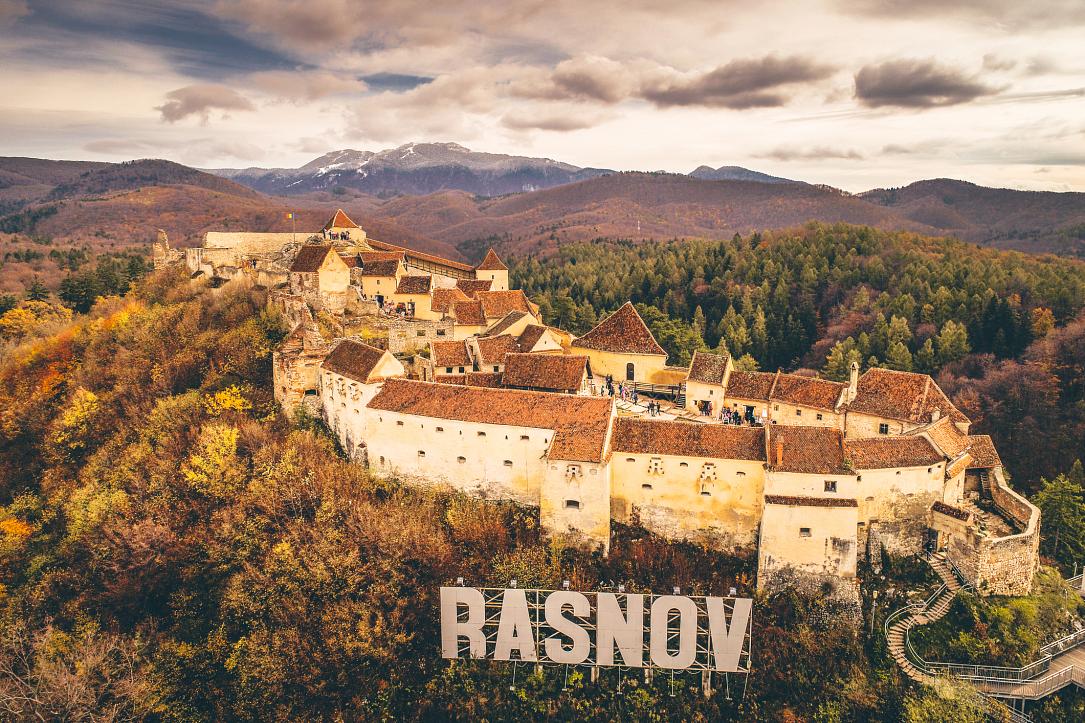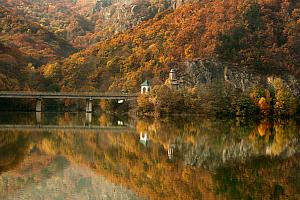Romania Photo of the Day by Dreamstime: Râșnov Fortress in autumn colors

The Romania Photo of the Day created in partnership with stock photo provider Dreamstime aims to highlight the best of Romania. From stunning landscapes and popular tourist destinations and landmarks to people, traditions, and food, this series helps you discover Romania one photo at a time. This week, we put the focus on beautiful Romanian landscapes in autumn colors.
Located on the old commercial route linking the provinces of Transylvania and Walachia, close to Brașov and Bran Castle, Râşnov Fortress (Rosenau in German) is perched on a rocky hilltop in the Carpathian Mountains, while 650 feet below it sits the pretty little town of the same name. (Photo source - click on the number to get to the photo 239798899 / Autumn Romania © Adragosphoto | Dreamstime.com)
According to urlaub-in-rumanien.de, the rocky peak the fortress sits on provided a defense to local people since the time of the Dacians, as recent archaeological discoveries prove.
Possibly built by Teutonic Knights as protection against invading Tartars, the first mention of the fortress of Râșnov dates from a document written in 1331, but its present appearance is mostly the result of consolidation work carried out two centuries later by the local Saxon population.
At a time when Bran Castle had not yet been built, Râșnov was an important point for trading and the taxation of merchants by the manor.
Additionally, Râşnov differs from other Saxon fortresses, says romaniatourism.com, in that it was designed as a place of refuge over extended periods of time, and as such, during days of old it had at least 30 houses, a school, a chapel, and other buildings more commonly associated with a village, alongside its defensive system which included nine towers, two bastions, and a drawbridge. As theglobetrottingteacher.com says, all classes of people, including peasants from nearby villages, fled to the fortress and stayed in the small houses lining the spiraling streets inside.
Surrounded by 500-foot-slopes on the north, south, and west sides, the fortress was obliged to surrender only once, in the year 1612 when invaders managed to find the secret route that supplied the people inside the fortress with water.
With the location of their water supply no longer a secret, the need for a well inside the fortress became a must. It would also mean the people would no longer have to go outside the gates at all during a siege, providing extra security. The 470-foot-deep well, which took 17 years to complete, was in use until 1850 when the wheel broke.
The last siege of Râşnov Fortress took place in 1690 during the final Ottoman invasion of Transylvania.
Damaged by fire and earthquake, it was rebuilt a couple of times. During the Revolution of 1848, the fortress was last used as a place of refuge, and then abandoned. Since then, it has been renewed as a museum and tourist attraction.
The fortress also offers spectacular views of the surrounding countryside and mountains.













